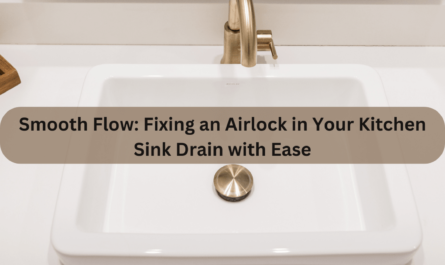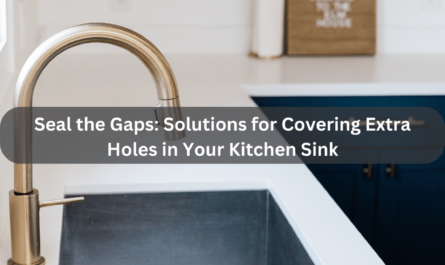Introduction For How To Repair Kitchen Cabinets With Water Damage
In the heart of the home, where the aroma of meals and the warmth of gatherings intertwine, kitchen cabinets stand as guardians of both functionality and aesthetics. However, when water damage infiltrates this sanctuary, it can compromise the integrity and allure of your cabinets.
Fear not, for this guide is a compass through the realm of repairing kitchen cabinets with water damage. From identifying the subtle signs to employing the right tools and techniques, join us on a journey to restore your cabinets to their former glory, preserving not only their structural soundness but the visual charm that makes your kitchen uniquely yours.
Q1: How To Repair Kitchen Cabinets With Water Damage?
A1: Look for discoloration, warping, or swelling of the cabinet surfaces, particularly near sinks, dishwashers, or areas prone to water exposure to repair kitchen cabinets with water damage.
Q2: What tools do I need to repair water-damaged kitchen cabinets?
A2: You may need screwdrivers, wood glue, clamps, sandpaper, wood filler, a putty knife, and matching cabinet paint or finish.
Q3: Can I repair water damage without removing the cabinets?
A3: In some cases, yes. Surface-level damage like stains may be addressed without removing the cabinets, but more severe damage may require removal.
Q4: How do I remove water stains from the cabinet finish?
A4: Mix a solution of equal parts vinegar and water, apply it to the stain, let it sit for a few minutes, and gently rub with a cloth.
Q5: What should I do if the cabinet wood is warped due to water damage?
A5: If warping is minor, use clamps to reposition the wood and allow it to dry thoroughly. For severe warping, replacement may be necessary.
Q6: Can I use a dehumidifier to aid in the drying process?
A6: Yes, a dehumidifier can help remove excess moisture from the air, aiding in the drying of water-damaged cabinets.
Q7: How do I repair swollen cabinet doors or drawer fronts?
A7: Remove the affected doors or drawer fronts, let them dry, sand down any swollen areas, and reattach them once dry. If severe, replacement may be needed.
Q8: Is it possible to fix delamination on cabinet surfaces caused by water damage?
A8: Delamination may be challenging to repair. If the damage is extensive, replacement of the affected components may be the most effective solution.
Q9: Can I use wood filler for repairing minor water damage on cabinets?
A9: Yes, wood filler can be used to fill in small cracks or imperfections caused by water damage. Sand it down once dry for a smooth finish.
Q10: How do I prevent future water damage to kitchen cabinets?
A10: Seal cabinet surfaces with a water-resistant finish, fix leaks promptly, and use protective mats or trays in areas prone to water exposure.
Q11: Can I paint over cabinets to hide water damage?
A11: Yes, painting is an effective way to conceal water damage. Ensure the damaged area is clean, dry, and properly prepped before painting.
Q12: What if the water damage has led to mold growth on cabinets?
A12: Address mold promptly by cleaning the affected area with a mixture of water and mild detergent. For extensive mold, consult a professional.
Q13: Should I consult a professional for severe water damage on cabinets?
A13: Yes, for extensive or structural damage, consulting a professional cabinet repair or restoration service is advisable.
Q14: Can I prevent water damage by applying a waterproof sealant to cabinets?
A14: Yes, applying a waterproof sealant to cabinet surfaces can provide an extra layer of protection against water damage.
Q15: Are there DIY solutions for resealing cabinet joints to prevent water intrusion?
A15: Yes, applying wood glue or a water-resistant adhesive to cabinet joints can help reinforce them and prevent water penetration.
Q16: How do I address water damage on the cabinet’s interior?
A16: Remove the affected contents, allow the interior to dry thoroughly, and address any discoloration or warping with appropriate repair methods.
Q17: Can I replace damaged cabinet panels without replacing the entire cabinet?
A17: Yes, if the damage is limited to a specific panel, it can often be replaced individually without replacing the entire cabinet.
Q18: What measures should I take if water damage has affected the cabinet’s structural integrity?
A18: Consult a professional to assess the structural damage, as extensive repairs may be needed to ensure the cabinet’s stability.
Q19: Are there specialized products for restoring water-damaged cabinets?
A19: Yes, there are wood restoration products available, such as epoxy-based fillers, designed specifically for repairing water-damaged wood surfaces.
Q20: How often should I inspect my kitchen cabinets for potential water damage?
A20: Regularly inspect your cabinets, especially around sinks and appliances, and address any water-related issues promptly to prevent extensive damage.
Conclusion On How To Repair Kitchen Cabinets With Water Damage
As we conclude this exploration into the remediation of water-damaged kitchen cabinets, envision a kitchen where resilience meets beauty. The repaired cabinets, once marred by the unwelcome touch of water, now stand as a testament to restoration and care.
May the journey of repair not only reinstate the practical functionality of these cabinets but also rekindle the aesthetic appeal that defines the soul of your culinary haven. Here’s to a kitchen where cabinets, weathered by challenges, emerge stronger and more captivating, embodying the enduring spirit of a well-loved and well-lived space.




